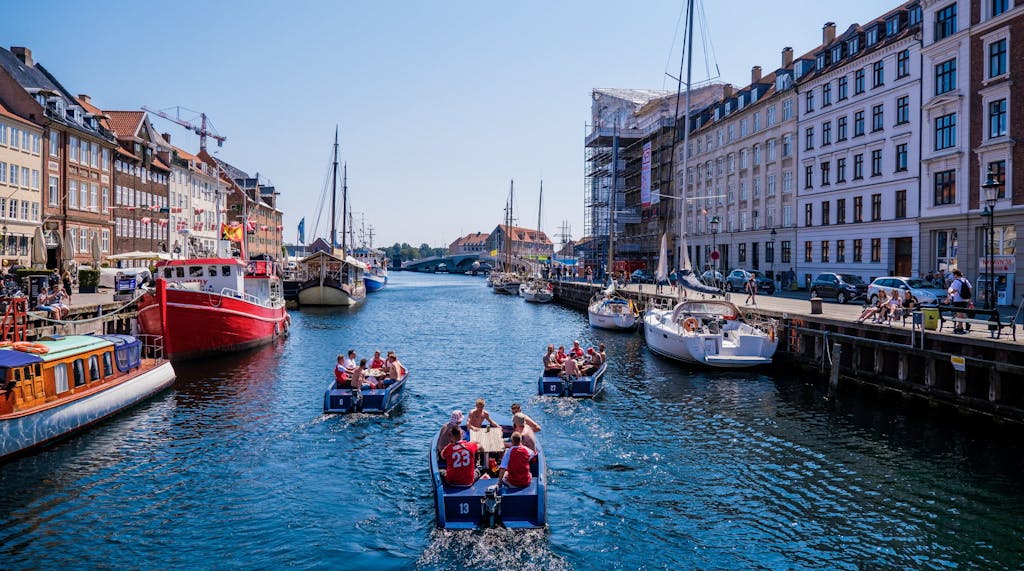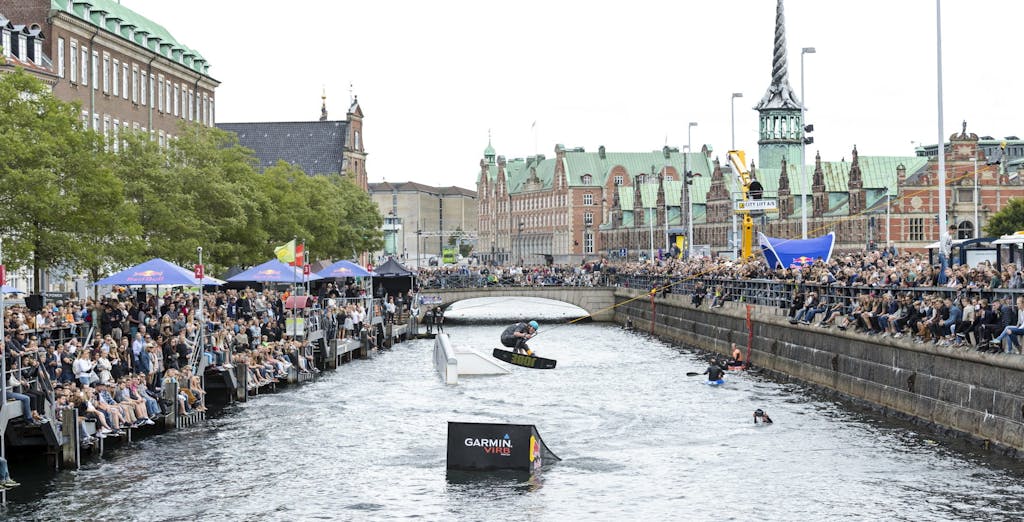With the Tour de France’s Grand Départ set to visit this summer and Uefa European Championship matches having taken place last year, Copenhagen is steadily building a reputation as a reliable host city that is ready for a variety of sporting events.
In August, the Danish capital’s credentials will be further enhanced when it welcomes SailGP, the global sailing series that launched in 2019.
Copenhagen had been due to stage the fourth event of the series’ second season in August last year before being replaced on the calendar by fellow Danish city Aarhus as Covid-19 forced a rethink of the schedule.
With pandemic restrictions now relaxed, the city is ready to put on a show this summer with the event officially known as ‘ROCKWOOL Denmark Sail Grand Prix | Copenhagen’.
“With a Danish home team – Denmark SailGP Team presented by ROCKWOOL – and with SailGP’s strong focus on sustainability, technology and innovation, Copenhagen was a great match for our shared values,” says Jonas Høgh-Christensen, Nordic director and head of events at SailGP.
“SailGP will bring the world’s first climate-positive global sports league to the city, sharing knowledge and insights with business leaders and stakeholders on the transition to clean energy, creating an amazing event powered by nature and an enormous positive financial impact to the city. SailGP’s legacy programmes – Inspire, the Impact League and Champions for Change – will all leave a lasting positive impact long after our event is over.”

Valuable asset
Copenhagen Harbour features a mix of old and new buildings and is home to the impressive Opera House, whose roof is a popular spot for adrenaline-seeking cliff-divers.
The harbour basin’s clean water also lends itself to wakeboarding, swimming, kayaking and fishing. The harbourside area was used to house a fan village during Euro 2020, with a temporary swimming zone set up for guests.
Although not specifically designed for conventional sports events, the harbour area can serve as an alternative venue option for rights-holders.
“The harbour is an extremely valuable asset because it is so unique,” says Lars Vallentin, senior manager at Wonderful Copenhagen, the official tourism organisation of the Capital Region of Denmark. “It is obviously easier to fit conventional events into a stadium, but in terms of ambience, beauty and storytelling the Copenhagen harbour offers something special.”
As recently as the 1990s, the harbour was in no fit state to welcome swimmers. However, a range of initiatives were carried out to improve cleanliness, including the introduction of dedicated underground basins that can hold 260,000 square metres of wastewater.
No chemicals are used to clean the harbour, with the control of sewer water providing a safe environment for fishing and swimming. Copenhagen has even been recognised by CNN as the world’s best city for swimming.
While the SailGP event stands out on the calendar this summer, the city will also stage the Red Bull Cliff Dive and the Copenhagen Swim, with the latter set to attract almost 5,000 participants.
The SailGP event, meanwhile, will utilise the entrance to the Copenhagen Harbour, with large spectator stands to be erected around the cruise terminal. A race zone will incorporate the city of Copenhagen and the Øresund Bridge, which connects Denmark to Sweden.
According to Vallentin, the harbour will be capable of hosting thousands of guests across a large area that would “comfortably” welcome four large cruise ships.

Versatility
The transformation of Copenhagen Harbour into a venue capable of hosting major sporting events has not happened overnight. The Copenhagen Swim was held for the first time in 2006 and since then the area has gradually stepped up its hosting capabilities.
“This event became so popular that it is now a yearly celebration of the clean harbour with more participants each year,” says Vallentin. “In 2009, World Cup finals in archery were hosted in Copenhagen and the event took place in front of colourful houses in the iconic Nyhavn canal, embodying Copenhagen’s focus on utilising the city as a venue.
“In 2017, the new SUP World Championship was hosted in the harbour and they will return in 2024-26.”
The focus is not only on attracting events that will take place in the water, but also on leveraging the harbour as an asset for other events and fan villages.
“When the industrial operators left, Copenhagen was short of actual sport venues and the focus in the city was to think outside of the box and imagine how the city itself could be utilised as a venue for large events,” Vallentin adds.
“This led to some groundbreaking concepts, but it was of course a challenge as the harbour is not developed with the infrastructure of a classic arena. Some of these issues have been helped with the introduction of flexible spaces, such as Ofelia Square.
“The challenge is to find and create events which match the opportunities of the harbour. You can’t necessarily do a ‘plug-and-play’ solution like you can from one stadium to the next, but when it works, the ambience and the magic of being set in the harbour is well worth the effort.”

Engagement
Ahead of this summer’s event, SailGP is working with Wonderful Copenhagen, Sport Event Denmark, the Copenhagen municipality and By & Havn – an organization tasked with the development of the city’s port and Ørestad district – to ensure residents are engaged in the series through school initiatives, internships and the involvement of local yacht clubs.
As a SailGP host city, Copenhagen has also signed the league’s Climate Action Charter, which has been created in collaboration with the CDP, a global charity focused on environmental impact management. Aspects of the charter will be showcased during the event and Høgh-Christensen is hopeful that SailGP will be able to return to Copenhagen in the coming years.
The transformation of the harbour from an industrial hub into a welcoming space capable of hosting major sporting events illustrates Copenhagen’s appetite for welcoming events that can offer a fresh perspective of the city’s renowned infrastructure.
“Copenhagen’s harbour is the beating heart of the city, spreading life to all the parts it floats through,” says Vallentin. “It’s a shared space that everyone can use and these events help shine a light on a great part of Copenhagen and one of the city’s best sustainability stories.
“The ambition to turn a dirty, industrial harbour into a recreational haven holds the essence of what Copenhagen is all about.
“It is a way to show the world that it matters to dream green and think big. In Copenhagen we haven’t built any fancy white elephants. We have cleaned our harbour and allowed events to use it as a venue, just as the locals use it as a huge blue playground.”